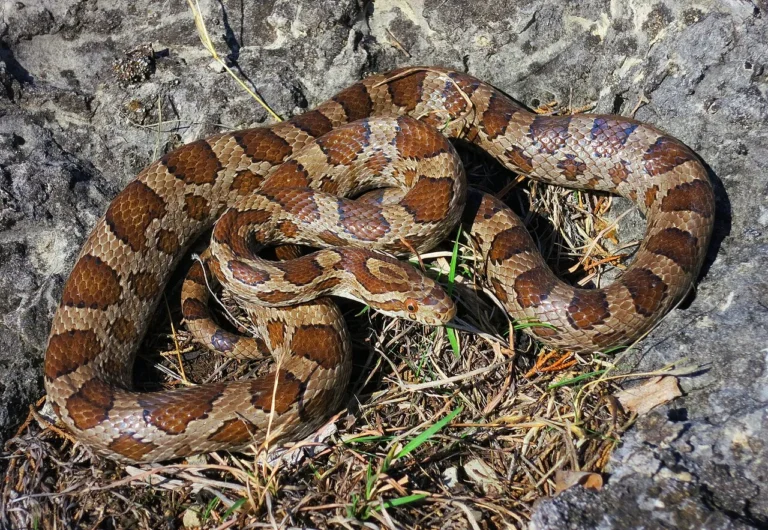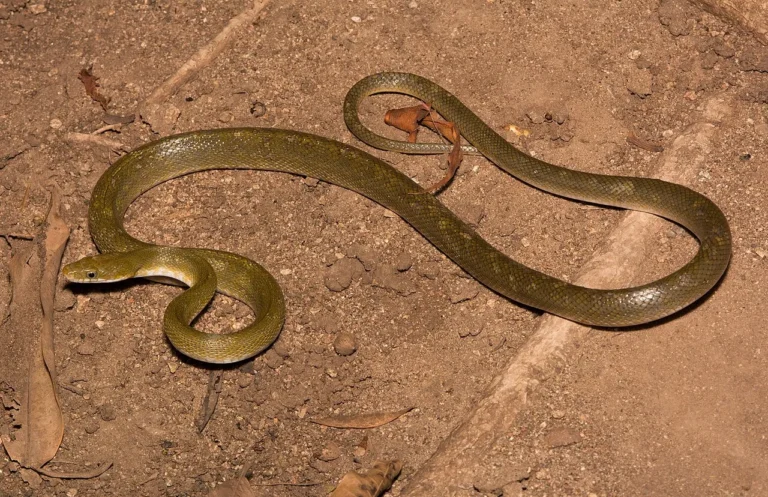Ermine Vs Stoat Difference and Similarity Discussed Introduction:
In examining a potential encounter between an ermine and a stoat, we delve into the shared and often interchangeable characteristics of these small carnivores. The terms “ermine” and “stoat” are frequently used interchangeably, particularly when referring to the light-colored fur or winter camouflage of these animals. This analysis highlights the essentially identical nature of ermines and stoats, emphasizing that the distinctions between them are minimal and the terms are often used interchangeably, while still acknowledging the factors (like weight and size) that have been chosen as distinctions between these animals).
Ermine vs Stoat: Assessing the Interchangeability of Terms
In comparing/considering a potential clash between an ermine and a stoat, it’s crucial to recognize that the terms are often used interchangeably, reflecting their nearly identical characteristics. The lack of concrete distinction between the two animals is evident, especially when referencing their light-colored fur or winter camouflage.
I). Ermine and Stoat Terminology:
– The terms “ermine” and “stoat” are commonly used interchangeably, with both referring to the same species of small carnivorous mammals within the mustelid family. The interchangeable usage is particularly prevalent when describing their fur characteristics.
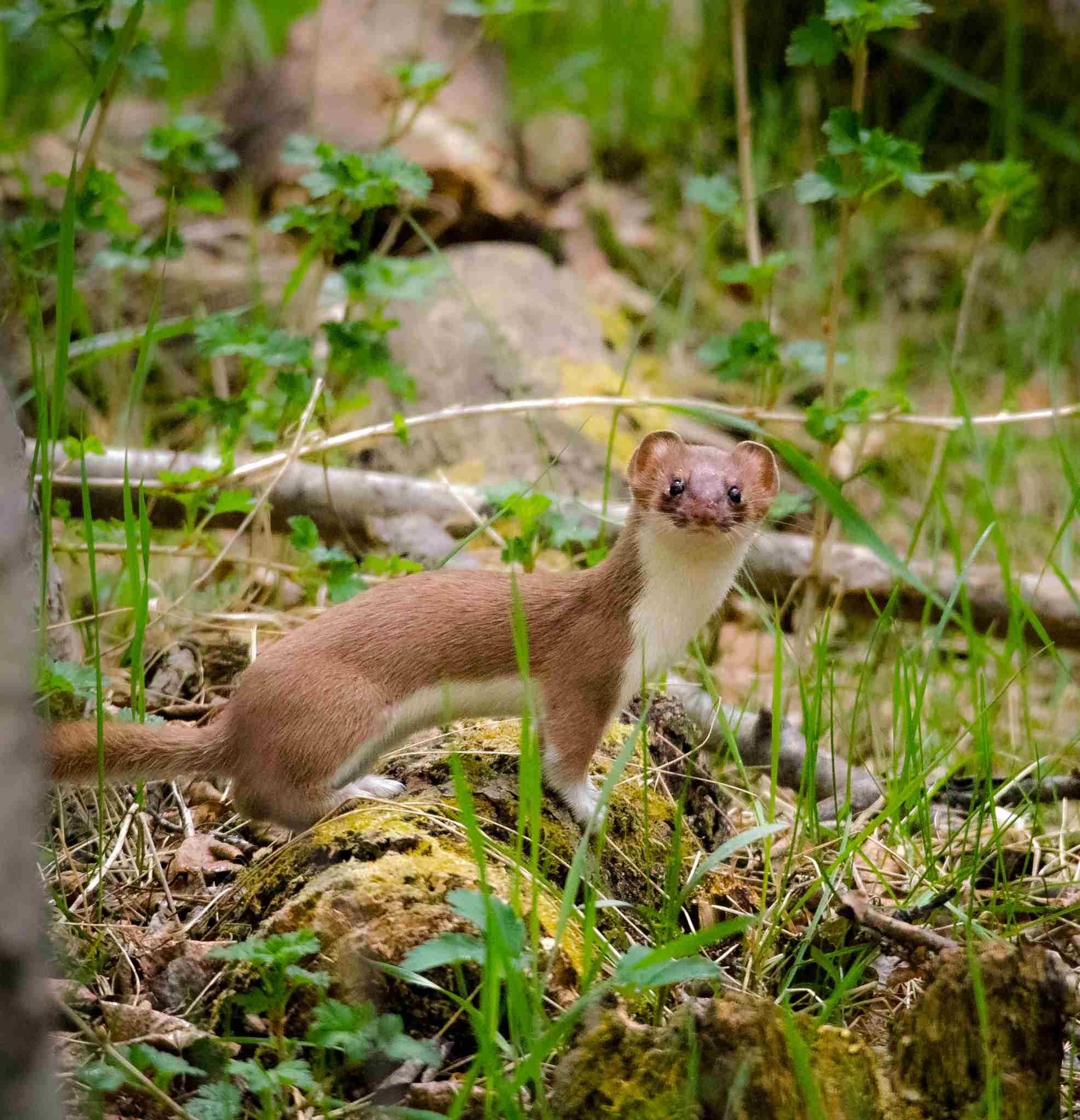
II). Shared Characteristics:
– Ermines and stoats share essentially identical physical characteristics, including slender bodies, short legs, and a coat that changes color with the seasons. In winter, their fur becomes white or light-colored, providing effective camouflage in snowy environments.
III). Light-Colored Fur and Winter Camouflage:
– The use of the terms ermine and stoat often centers around the distinctive feature of their fur changing to a white or light color during winter. This adaptive camouflage serves as a survival strategy in snowy landscapes.
IV). No Concrete Distinction:
– The interchangeable use of ermine and stoat is evident in literature and discussions surrounding these animals. Articles and references often use both terms without a clear and concrete distinction between the two.
V). Article Reflection:
– The lack of a definitive distinction between ermines and stoats is reflected in various articles and sources. This interchangeable usage underscores the notion that, in many contexts, there is no practical need to differentiate between the two terms.
VI). Overall Understanding:
– In a practical sense, ermine and stoat are understood to represent the same species, with the terms being used interchangeably to describe these small, elusive carnivores. The near-identical nature of their characteristics contributes to the interchangeable usage.
VII). Derivation:
– In this examination, the terms ermine and stoat are essentially synonymous, reflecting the minimal distinctions between these small carnivores. The interchangeable use of these terms, especially when referring to fur color and winter camouflage, highlights the practical absence of a concrete distinction between ermines and stoats in common language and understanding.
*Details of Comparison
| Criteria | Ermine | Stoat |
| Appearance | White winter coat, brown summer coat |
White winter coat, brown summer coat
|
| Size | Smaller | Slightly larger |
| Weight | Lighter | Heavier |
| Bite Force (PSI) | Limited information |
Limited information
|
| Physical Offensive Advantages | Sharp teeth, claws, agility |
Sharp teeth, claws, agility
|
| Physical Defensive Advantages | Agility, camouflage |
Agility, camouflage
|
| Speed | Limited information |
12 to 16 km/hour
|
| Agility | Highly agile | Highly agile |
| Senses | Acute sight, hearing, smell |
Acute sight, hearing, smell
|
| Overall Physical Capacity | Winter coat adaptation, agility |
Winter coat adaptation, agility
|
| Habitat Preference(s) | Tundra, boreal forests, alpine meadows |
Varied habitats (grasslands, woodlands)
|
| Tracks | Similar, slight size differences |
Similar, slight size differences
|
| Lifespan | 1 to 4 years | 1 to 2 years |
| Mode of Feeding | Carnivorous, prey on small mammals, birds, insects |
Carnivorous, preference for rodents, birds, insects
|
| Intelligence | Intelligent hunters, adapt strategies |
Clever and adaptable hunters, varied strategies
|
| Social Behavior | Generally solitary, except mating season |
Generally solitary, except mating season
|
| Mode of Reproduction | Polygamous mating system, gestation ~280 days |
Polygamous mating system, gestation ~280 days
|
| Parental Behavior | Female raises offspring alone |
Female is primary caregiver
|
| Proximity to Human-Inhabited Areas | Found near human settlements, especially winter |
May venture close to human areas, rural or suburban
|
| Behavior Toward Humans | Generally avoids, may explore for food |
Tends to avoid, occasional curiosity
|
| Danger Posed to Humans | Low danger, rare bites if threatened |
Low danger, rare bites if threatened
|
| Associated Precautions | Observe from a distance, avoid provoking |
Observe from a distance, avoid provoking
|
| Conservation Status | Least Concern (LC) on IUCN Red List |
Least Concern (LC) on IUCN Red List
|
Key Points
- Both ermine and stoat share a similar appearance, habitat preferences, and ecological roles.
- Stoats are generally larger and heavier than ermines.
- Limited information on bite force for both species.
- Both species exhibit high agility, acute senses, and similar physical capacities.
- Lifespan is slightly longer for ermines compared to stoats.
- Both are carnivorous, with some variations in prey preferences.
- Both are intelligent hunters with adaptable strategies.
- Both exhibit solitary behavior outside of the breeding season.
- Proximity to human-inhabited areas and behavior toward humans are similar.
- Low danger to humans with associated precautions.
- Conservation status is Least Concern (LC) for both species.
1. Taxonomy:
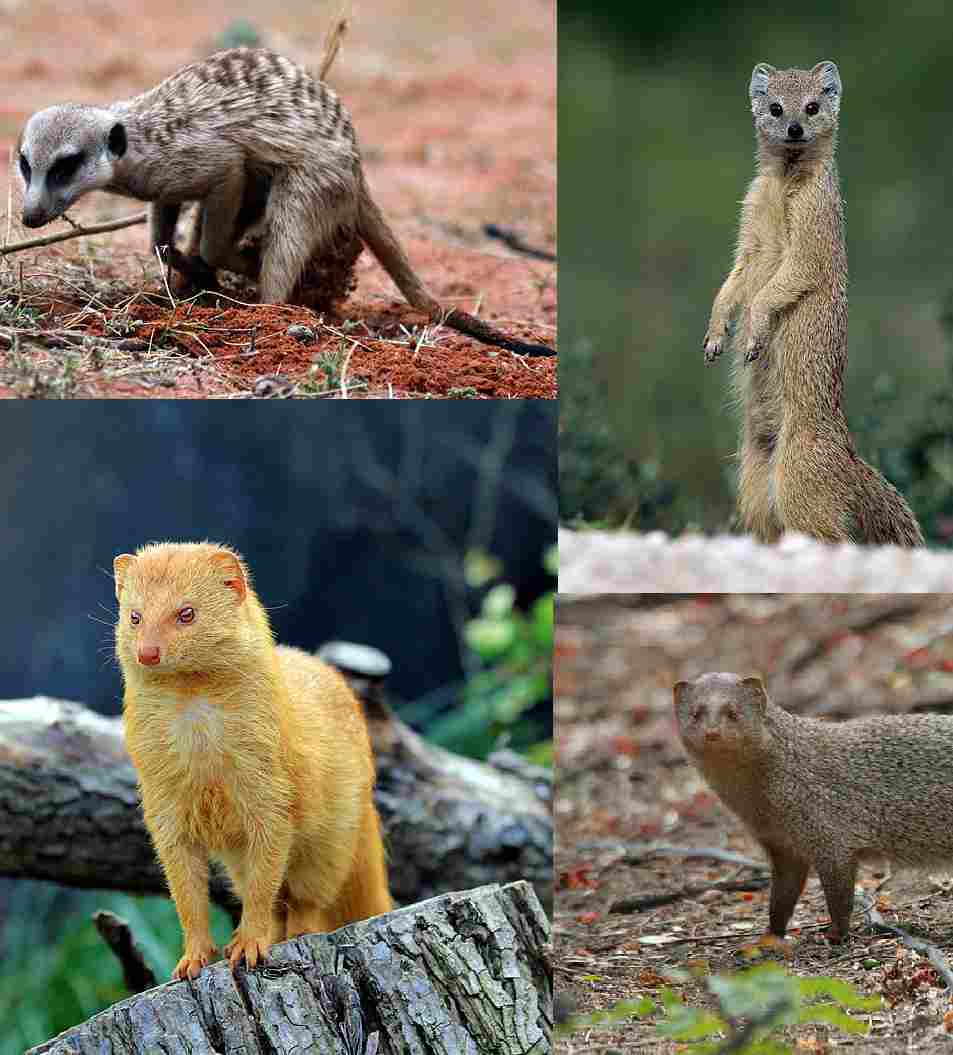
Ermine (Mustela erminea):
Kingdom: Animalia
Phylum: Chordata
Class: Mammalia
Order: Carnivora
Family: Mustelidae
Genus: Mustela
Species: M. erminea
Stoat (Mustela erminea):
Kingdom: Animalia
Phylum: Chordata
Class: Mammalia
Order: Carnivora
Family: Mustelidae
Genus: Mustela
Species: M. erminea
2. Appearance:
Ermine:
Winter Coat: White with a black-tipped tail, a distinctive characteristic.
Summer Coat: Brown with a white belly.
Adaptation: Camouflage in snowy environments during winter.
Stoat:
Winter Coat: White with a black-tipped tail, similar to ermine.
Summer Coat: Brown with a white belly.
Adaptation: Seasonal color change for camouflage in different environments.
Comparison:
Ermine and stoat have identical appearances but are often differentiated based on the terminology used to describe them in different seasons.
Ecological Implications:
The seasonal color change helps them blend into their surroundings, aiding in hunting and avoiding predators.
3. Size:
Ermine:
Length: 7 to 13 inches (18 to 33 cm).
Tail Length: 3 to 6 inches (7.5 to 15 cm).
Stoat:
Length: 8 to 12 inches (20 to 30 cm).
Tail Length: 2.8 to 5 inches (7 to 13 cm).
Comparison:
Stoats are slightly larger than ermines, both in body length and tail length.
Ecological Implications:
Size differences may influence their ability to access different prey or navigate various habitats.
4. Weight:
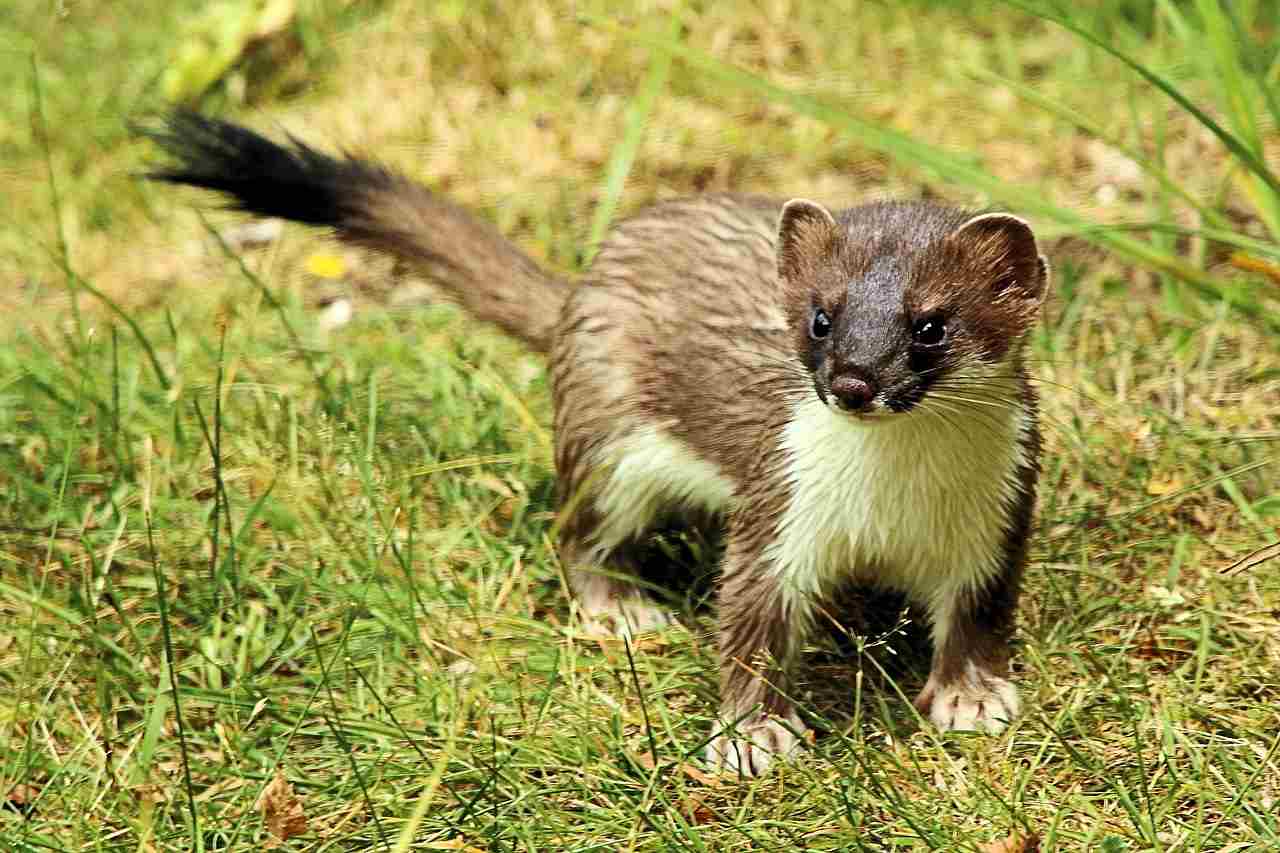
Ermine:
Weight: 1 to 4.5 ounces (28 to 128 grams).
Stoat:
Weight: 6 to 16 ounces (170 to 450 grams).
Comparison:
Stoats are significantly heavier than ermines.
Ecological Implications:
Weight influences energy requirements, predation strategies, and overall ecological impact within their respective habitats.
5. Bite Force (PSI – Pounds per Square Inch):
Ermine:
Bite Force: Data not readily available.
Stoat:
Bite Force: Data not readily available.
Comparison:
Limited information on bite force makes direct comparison challenging.
Ecological Implications:
Bite force is crucial for hunting and consuming prey; however, specific ecological implications require further research.
6. Physical Offensive Advantages:
Ermine:
Sharp teeth and claws for effective hunting.
Agile and swift movements to catch prey.
Stoat:
Powerful bite and sharp claws.
Excellent agility for capturing elusive prey.
Comparison:
Both ermine and stoat possess similar offensive adaptations, utilizing sharp teeth, claws, and agility for successful hunting.
Ecological Implications:
Effective offensive capabilities contribute to their roles as predators, influencing prey populations and maintaining ecosystem balance.
7. Physical Defensive Advantages:
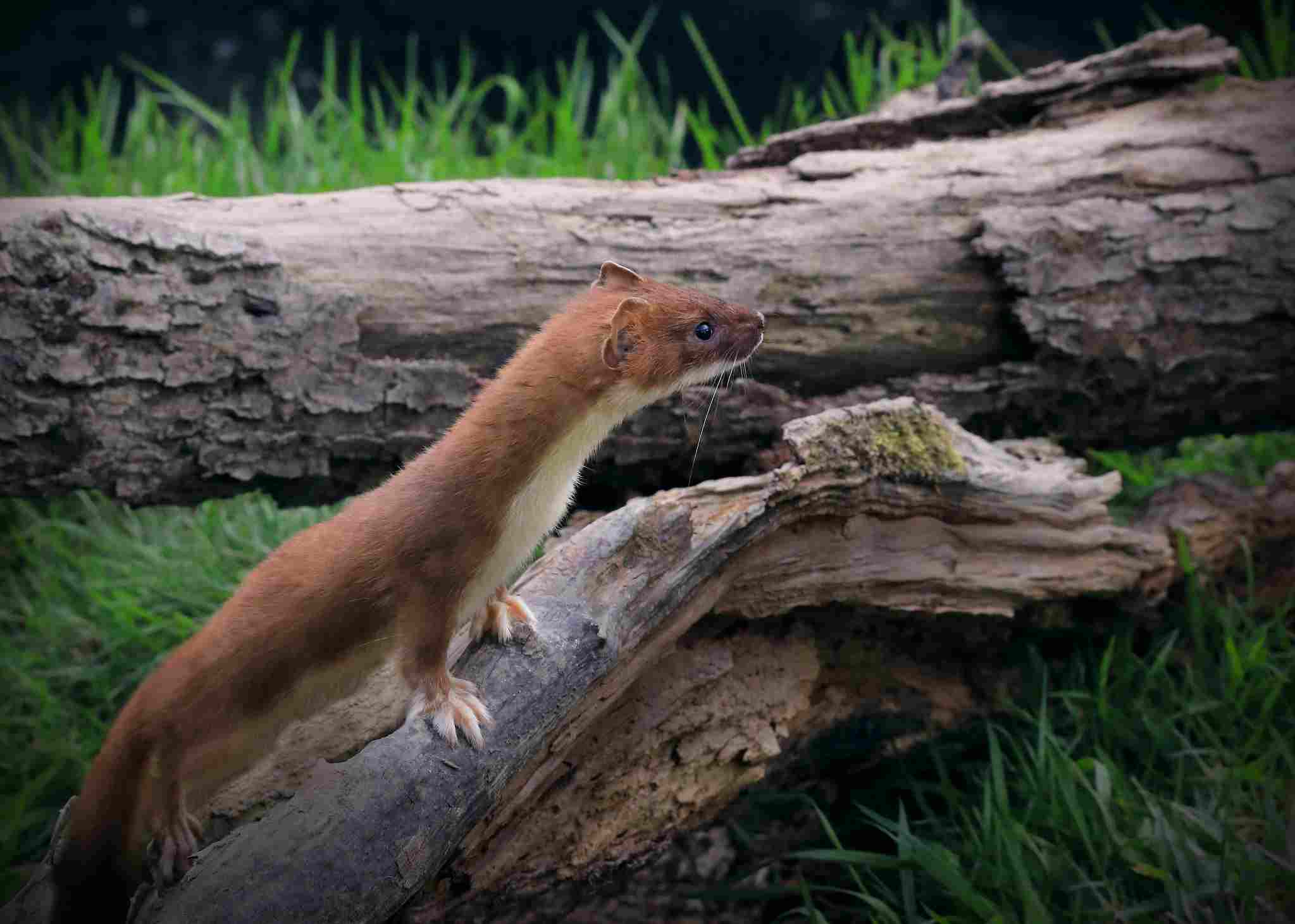
Ermine:
Quick and agile, able to escape predators.
Seasonal color change for camouflage.
Stoat:
Ability to emit a strong odor as a deterrent.
Camouflage through seasonal coat changes.
Comparison:
Both species rely on agility and camouflage as primary defensive mechanisms.
Ecological Implications:
Effective defense mechanisms contribute to their survival and impact population dynamics within their ecosystems.
8. Speed (Km/hour or Mile/hour):
Ermine:
Speed: Data not readily available.
Stoat:
Speed: 12 to 16 km/hour (7.5 to 10 mph).
Comparison:
Limited information on ermine speed makes direct comparison challenging.
Ecological Implications:
Speed is crucial for both hunting and evading predators, influencing their ecological roles within the food chain.
9. Agility:
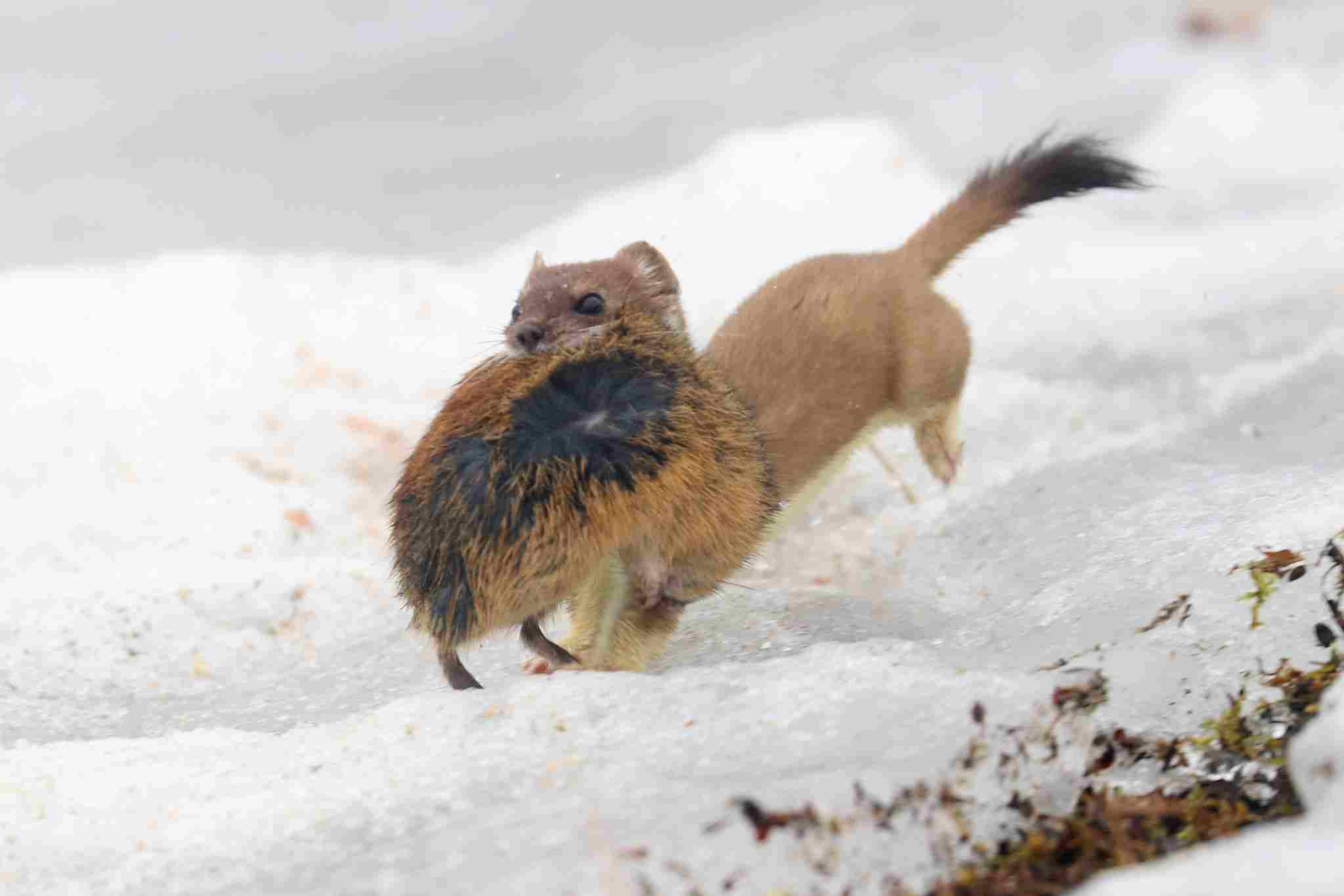
Ermine:
Agile with quick, precise movements.
Excellent climbers and swimmers.
Stoat:
Exceptionally agile, able to change direction rapidly.
Skilled climbers and swimmers.
Comparison:
Both species exhibit high levels of agility, essential for navigating diverse terrains and capturing prey.
Ecological Implications:
Agility contributes to their adaptability and success in various ecosystems, affecting interactions with both prey and predators.
10. Senses:
Ermine:
Keen senses of sight, hearing, and smell.
Well-developed whiskers for detecting vibrations.
Stoat:
Acute senses of sight, hearing, and smell.
Whiskers aid in navigation and prey detection.
Comparison:
Both ermine and stoat possess heightened senses, enabling effective hunting and awareness of their surroundings.
Ecological Implications:
Enhanced senses contribute to their roles as predators, influencing prey detection and ecosystem dynamics.
11. Overall Physical Capacity:
Ermine:
Well-adapted for cold climates with a thick winter coat.
Agile and efficient hunter.
Stoat:
Versatile in adapting to different environments.
Robust physical capabilities for capturing diverse prey.
Comparison:
While both share similar physical capacities, stoats exhibit versatility in adapting to a range of environments.
Ecological Implications:
Versatility allows them to exploit diverse habitats, impacting the distribution of prey species and shaping ecosystems.
12. Habitat Preference(s):
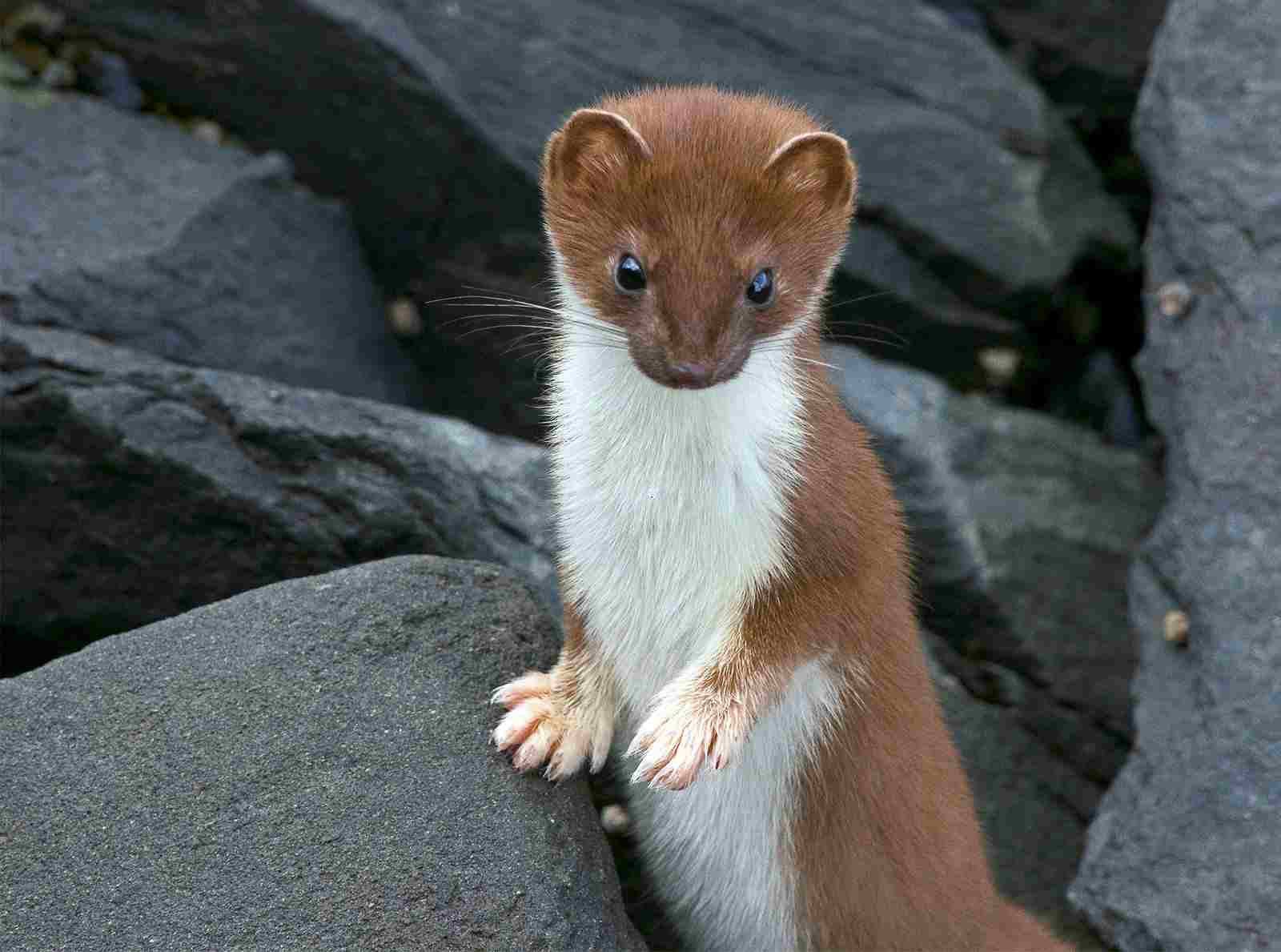
Ermine:
Tundra, boreal forests, and alpine meadows.
Stoat:
Varied habitats including grasslands, woodlands, and moorlands.
Comparison:
Ermine and stoat have some overlapping habitats but also display preferences for different environments.
Ecological Implications:
Habitat preferences influence their ecological roles and interactions with other species in specific ecosystems.
13. Tracks:
Ermine:
Smaller tracks with distinct patterns.
Paw prints show claw marks.
Stoat:
Similar to ermine tracks but slightly larger.
Paw prints may also display claw marks.
Comparison:
Tracks are similar due to their shared species, but size differences may help distinguish between them.
Ecological Implications:
Tracking and studying prints aid in understanding their presence, behavior, and population dynamics within ecosystems.
14. Lifespan:
Ermine:
Typically 1 to 4 years in the wild.
Stoat:
Generally 1 to 2 years in the wild.
Comparison:
Ermines tend to have a slightly longer lifespan compared to stoats in the wild.
Ecological Implications:
Lifespan influences population dynamics, reproductive strategies, and overall ecological impact within their habitats.
15. Mode of Feeding:
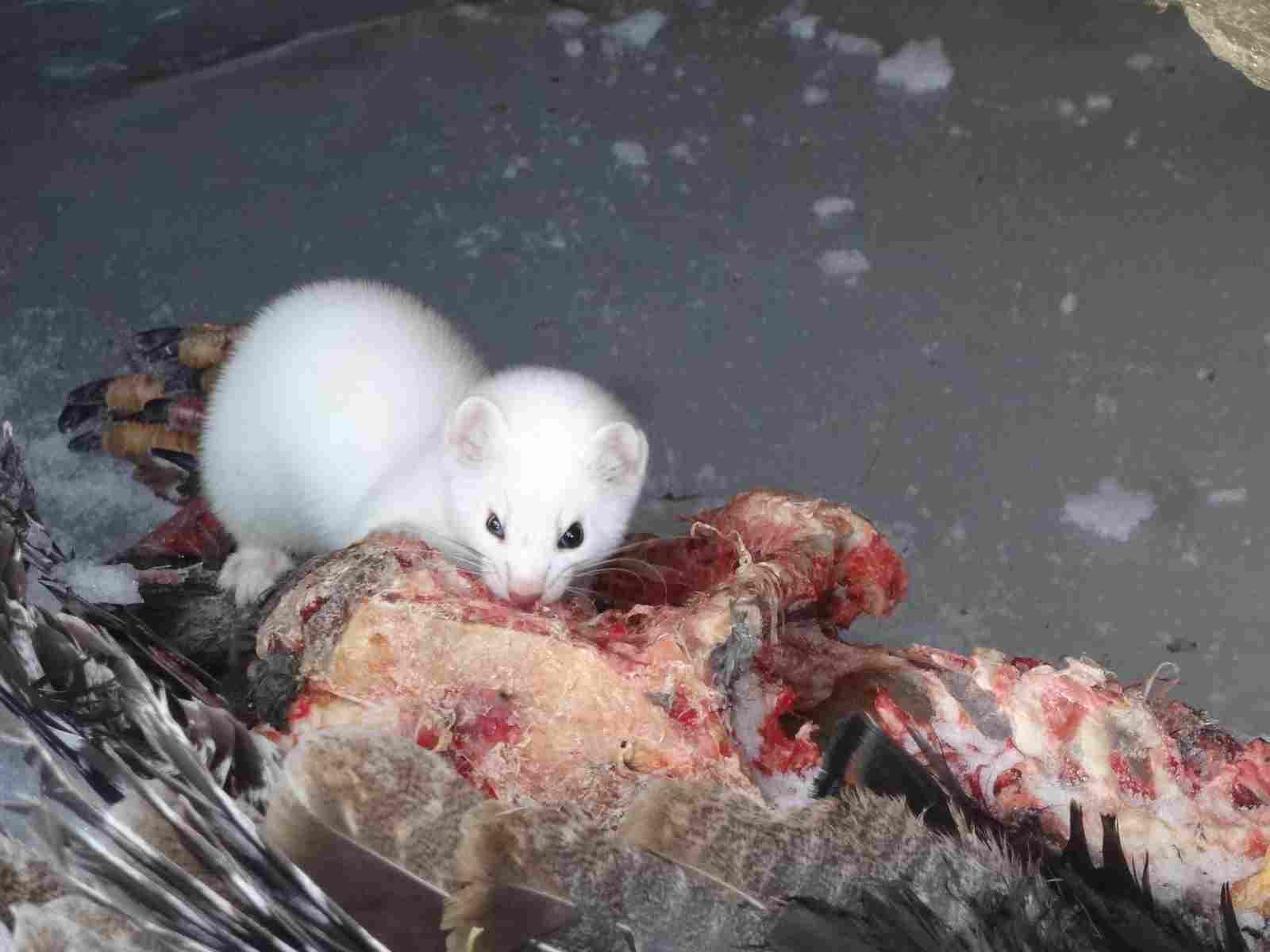
Ermine:
Carnivorous diet, preying on small mammals, birds, and insects.
Stoat:
Carnivorous diet, with a preference for rodents but also consuming birds and insects.
Comparison:
Both species share a similar carnivorous diet, with some variations in prey preferences.
Ecological Implications:
Feeding habits contribute to their ecological roles as predators and impact prey populations in their respective ecosystems.
16. Intelligence:
Ermine:
Intelligent hunters, adapting strategies for different prey.
Stoat:
Clever and adaptable hunters, employing various techniques for successful predation.
Comparison:
Similar levels of intelligence, adapted to their specific hunting environments.
Ecological Implications:
Intelligence plays a role in their ability to navigate and exploit different ecological niches, affecting interactions with other species.
17. Social Behavior:
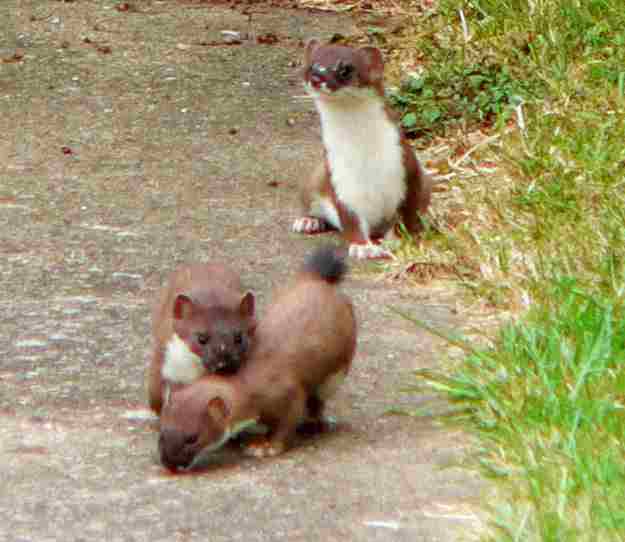
Ermine:
Generally solitary, except during the mating season.
Stoat:
Solitary, except during the breeding season.
Comparison:
Both ermine and stoat exhibit solitary behavior outside of the breeding season.
Ecological Implications:
Solitary behavior influences their ecological footprint and resource utilization within their habitats.
18. Mode of Reproduction:
Ermine:
Polygamous mating system.
Breeding season: Late spring to early summer.
Gestation period: Around 280 days.
Stoat:
Polygamous mating system.
Breeding season: Late spring to early summer.
Gestation period: Approximately 280 days.
Comparison:
Ermine and stoat share a similar reproductive strategy with a polygamous mating system and comparable gestation periods.
Ecological Implications:
Reproductive strategies impact population dynamics, with potential ecological consequences related to prey and predator interactions.
19. Parental Behavior:
Ermine:
Female raises the offspring alone.
Young are independent after a few months.
Stoat:
Female is the primary caregiver.
Young become independent after a few months.
Comparison:
Both species exhibit a similar parental behavior pattern, with the female being the primary caregiver.
Ecological Implications:
Parental behavior influences the survival and growth of the young, impacting population dynamics within their habitats.
20. Proximity to Human-Inhabited Areas:
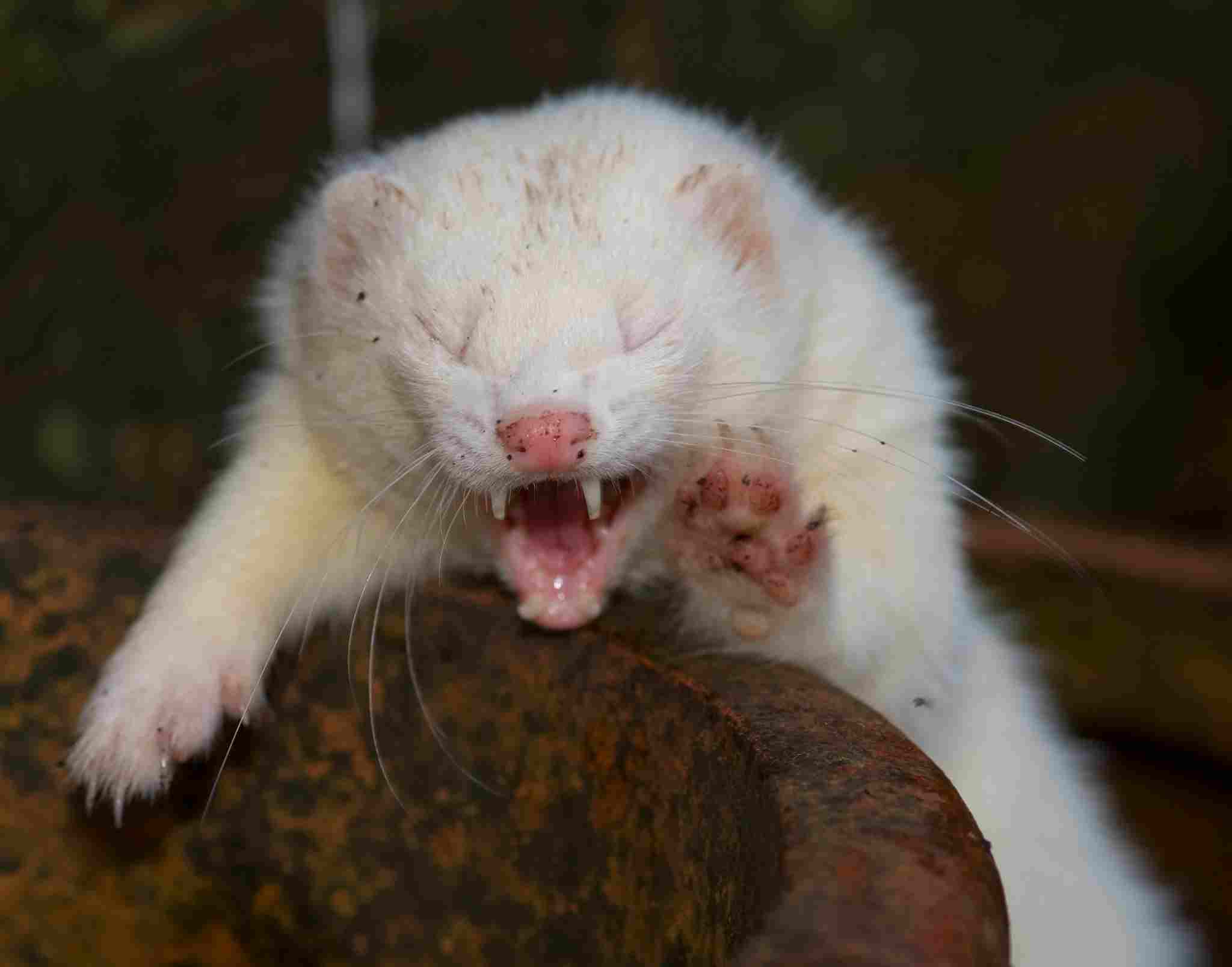
Ermine:
Can be found near human settlements, especially during winter.
Stoat:
May venture close to human-inhabited areas, particularly in rural or suburban settings.
Comparison:
Both ermine and stoat can adapt to and be found in proximity to human-inhabited areas.
Ecological Implications:
Proximity to human settlements can influence interactions, potentially leading to human-wildlife conflicts or providing opportunities for adaptation.
21. Behavior Toward Humans:
Ermine:
Generally avoids human contact but may explore human-inhabited areas for food.
Stoat:
Tends to avoid humans but can be curious, leading to occasional sightings.
Comparison:
Both species exhibit a tendency to avoid direct interactions with humans, but individual behaviors may vary.
Ecological Implications:
Human interactions can impact their behavior, affecting their roles within local ecosystems and potentially leading to conservation concerns.
22. Danger Posed to Humans:
Ermine:
Generally poses minimal danger to humans.
May bite if threatened or cornered, but incidents are rare.
Stoat:
Low danger to humans.
Rare cases of bites may occur if they feel threatened.
Comparison:
Both ermine and stoat are not considered significant threats to human safety.
Ecological Implications:
Low danger to humans reduces the likelihood of negative human-wildlife interactions and promotes coexistence.
23. Associated Precautions:
Ermine:
If encountered, observe from a distance.
Avoid provoking or cornering the animal.
Stoat:
Similar precautions apply – observe from a distance.
Avoid actions that may be perceived as threats.
Comparison:
Precautions for both species involve maintaining a safe distance and minimizing actions that could provoke defensive behaviors.
Ecological Implications:
Human awareness and responsible behavior contribute to minimizing disturbances and potential conflicts in their habitats.
24. Conservation Status:
Ermine:
Least Concern (LC) on the IUCN Red List.
Stoat:
Least Concern (LC) on the IUCN Red List.
Comparison:
Both ermine and stoat share a Least Concern conservation status, indicating stable populations.
Ecological Implications:
Stable populations suggest a balanced ecological relationship with their habitats.
Summary of Comparison
Appearance:
Both species share a similar appearance with white winter coats and brown summer coats.
Size:
Stoats are slightly larger than ermines in both body and tail length.
Weight:
Stoats are significantly heavier than ermines.
Bite Force (PSI):
Limited information on bite force for both species.
Physical Offensive Advantages:
Similarities include sharp teeth, claws, and agility for effective hunting.
Physical Defensive Advantages:
Both rely on agility and camouflage for defense.
Speed:
Limited information on ermine speed; stoats can reach 12 to 16 km/hour.
Agility:
Both species exhibit high levels of agility for hunting and navigation.
Senses:
Similar acute senses, including sight, hearing, and smell.
Overall Physical Capacity:
Both are well-adapted predators with seasonal coat changes.
Habitat Preference(s):
Ermines favor tundra and alpine meadows; stoats thrive in varied habitats.
Tracks:
Tracks are similar, but size differences may help distinguish them.
Lifespan:
Ermines generally have a slightly longer lifespan than stoats.
Mode of Feeding:
Both are carnivorous with variations in prey preferences.
Intelligence:
Similar levels of intelligence for adapting hunting strategies.
Social Behavior:
Solitary behavior, except during the breeding season.
Mode of Reproduction:
Polygamous mating system with a gestation period of around 280 days.
Parental Behavior:
Females are the primary caregivers, and young become independent after a few months.
Proximity to Human-Inhabited Areas:
Both can adapt to and be found in proximity to human settlements.
Behavior Toward Humans:
Tendency to avoid direct interactions with humans, with individual variations.
Danger Posed to Humans:
Low danger to humans for both species.
Associated Precautions:
Precautions involve maintaining a safe distance and avoiding actions that may be perceived as threats.
Conservation Status:
Both species are classified as Least Concern (LC) on the IUCN Red List.
Conclusion:
I. Similarities:
Ermine and stoat share a common species designation (Mustela erminea).
Similar ecological roles as predators.
Comparable reproductive strategies and behaviors.
II. Differences:
Size and weight distinctions, with stoats generally being larger.
Lifespan variation, with ermines typically having a slightly longer lifespan.
Habitat preferences may differ, impacting their ecological roles in specific environments.
